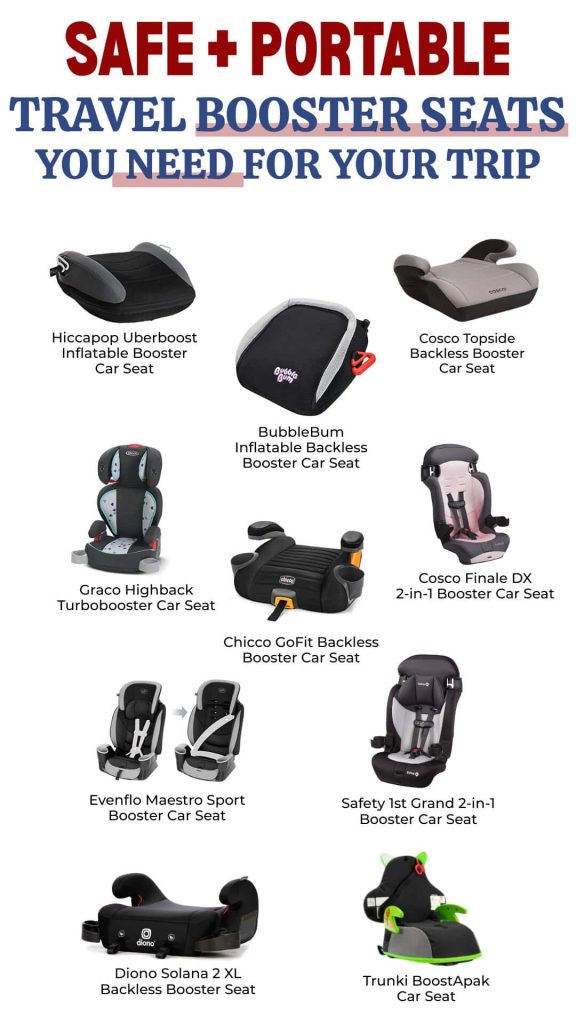When it comes to child safety in cars, many parents ask one big question: Are inflatable booster seats safe? This question is very important. Keeping children safe during car rides is a top priority. Booster seats help children sit higher so seat belts fit well. But what about inflatable ones? Let’s explore this topic carefully.
What Are Inflatable Booster Seats?
Inflatable booster seats are seats that you can blow up with air. They are soft and light. You can carry them easily because they fold small when empty. Many parents like them for travel or short trips. They look like small air cushions with a place for a seat belt. But how safe are they compared to regular booster seats?
How Do Booster Seats Work?
Booster seats raise a child so the car’s seat belt fits properly. Without a booster, the belt might rest on the neck or stomach. That can hurt a child in a crash. A booster seat moves the belt to the right place: across the chest and hips. This helps protect the child’s body better.
Types of Booster Seats
Before we look at inflatable seats, it helps to know about different types:
- High-back booster seats: These have a back and head support. They offer more protection.
- Backless booster seats: Just a cushion to raise the child. They are lighter and easy to carry.
- Inflatable booster seats: These can be blown up with air. They usually do not have a back.
Advantages of Inflatable Booster Seats
Inflatable booster seats have some good points:
- Portability: They are small when deflated. Easy to carry and store.
- Lightweight: Perfect for traveling or short trips.
- Easy to use: Blow them up and use quickly.
But Are They Safe?
This is the most important question. Safety rules for car seats are strict. Many experts say inflatable booster seats are not as safe as regular booster seats. Here is why:
1. Lack Of Firm Support
Inflatable seats are soft and flexible. In a crash, they may not hold the child firmly. Regular booster seats have hard plastic bases. They keep the child in place better.
2. Seat Belt Positioning
Booster seats help position the seat belt. Some inflatable seats may not do this well. A wrong seat belt position can cause serious injuries.
3. No Side Protection
Many inflatable booster seats have no back or side support. This leaves the child’s head and body unprotected. High-back boosters offer better protection in side crashes.
4. Crash Testing
Most inflatable booster seats have not passed strict crash tests. Regular booster seats must meet safety standards by law. Inflatable ones often do not meet these rules.
5. Air Leakage Risk
Inflatable seats can lose air. A slow leak makes the seat less safe. Parents may not notice the seat is deflated.

Credit: www.amazon.com
What Do Safety Experts Say?
Safety groups and experts usually advise against inflatable booster seats. They say these seats should only be used in emergencies. For daily use, choose a booster seat that meets safety laws.
When Can You Use Inflatable Booster Seats?
Inflatable booster seats can be useful in some cases:
- As a backup when no other seat is available
- For short rides or travel in a taxi
- When carrying a booster seat is hard
Even then, use caution and check the seat carefully.
Tips to Keep Your Child Safe in a Booster Seat
Here are some simple tips for parents:
- Use a booster seat approved by safety rules.
- Make sure the seat belt fits well. It should cross the chest and hips, not the stomach or neck.
- Check the booster seat condition often. No cracks or damage.
- Follow the weight and height limits. Booster seats have these limits for safety.
- Do not use inflatable booster seats for long trips.
- Always read the instruction manual.

Credit: www.humboldt.ca
Comparing Inflatable Booster Seats to Regular Booster Seats
| Feature | Inflatable Booster Seat | Regular Booster Seat |
|---|---|---|
| Portability | Very easy to carry, folds small | Bulky, heavier to carry |
| Safety Support | Soft, less firm support | Hard plastic base, firm support |
| Seat Belt Positioning | May not position belt well | Designed to position belt correctly |
| Side and Head Protection | Usually no side or head support | High-back seats offer good protection |
| Crash Test Approval | Often not crash tested | Meets strict crash test standards |
| Air Leakage Risk | Can leak air, loses safety | No risk of air leakage |
What Should You Choose?
If safety is your main concern, choose a regular booster seat. It offers better protection. Inflatable booster seats can be handy for travel. But they are not the best choice for everyday use.
Remember, car accidents can happen anytime. Choosing the right booster seat can save a child’s life. Always check safety labels and use the seat as the instructions say.
Final Thoughts
Inflatable booster seats are easy to carry and use. But they have many safety limits. They do not provide strong support or good seat belt positioning. Experts do not recommend them for daily use. For the best protection, use a booster seat that meets safety standards. Your child’s safety is worth the extra effort.
Always check the latest rules in your country. Safety laws may change and improve over time. Stay informed and keep your child safe on every ride.
Frequently Asked Questions
Are Inflatable Booster Seats Approved By Safety Standards?
Most inflatable booster seats lack official safety certifications from authorities like NHTSA or JPMA.
Can Inflatable Booster Seats Protect Children In A Crash?
They offer less protection compared to hard booster seats during accidents.
How Do Inflatable Booster Seats Compare To Traditional Ones?
Traditional booster seats provide better stability and safety than inflatable models.
Are Inflatable Booster Seats Easy To Use For Travel?
Yes, they are lightweight and compact, making travel convenient.
